Podcast: Play in new window | Download (Duration: 32:11 — 35.4MB)
Subscribe: Apple Podcasts | Spotify | Amazon Music | Android | Pandora | iHeartRadio | JioSaavn | Podcast Index | Email | TuneIn | RSS | More
By Davy Crockett
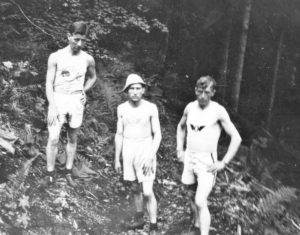 An ultramarathon held in 1911, The Mount Baker Race, was America’s first mountain trail ultramarathon. It was held in the state of Washington on a volcano, Mount Baker, located in the North Cascade mountains above the city of Bellingham. This historic forward-thinking race required participants to run between 28-32 miles and climb more than 10,000 feet through forests, over snow trails, across glaciers, and up to the wind-blown summit overlooking the Puget Sound to the west.
An ultramarathon held in 1911, The Mount Baker Race, was America’s first mountain trail ultramarathon. It was held in the state of Washington on a volcano, Mount Baker, located in the North Cascade mountains above the city of Bellingham. This historic forward-thinking race required participants to run between 28-32 miles and climb more than 10,000 feet through forests, over snow trails, across glaciers, and up to the wind-blown summit overlooking the Puget Sound to the west.
This very early mountain trail ultra, held for only three years, involved drama, danger, and near tragedies. It also included a unique feature never to be seen again in ultras. Those in 1911 explained, “The race is most unusual, combining not only mountain climbing but automobile racing and racing by special railway train as well.” Runners would race from Bellingham to their choice of trailhead, run to the summit of Mount Baker and back, and then speed back to town using cars or the train. The race organizers emphasized, “This is not over some ideal racecourse but over rocks and ice and snow, with an element of risk to chance.” Wow! Yes, it was exciting and dangerous.
Mount Baker
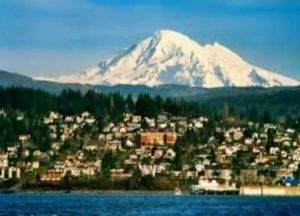

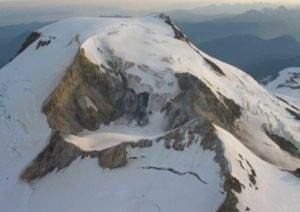

About 6,500 years ago, a major blast created Sherman Crater, just south of the summit and it is the site of escaping steam and gases. In 1864 it was reported that “a shock of an earthquake was felt in Washington Territory and the same day a portion of the top of Mount Baker fell inward. The portion of the mountain which collapsed is said to have been upward of a mile in width.”
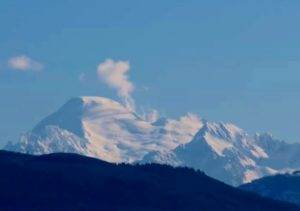

More recently, “In 1975, a large quantity of muddy steam rose into the sky, turning much of the ice-filled Sherman Crater into a steaming lake. An eruption was feared, so the mountain and Baker Lake were closed for the summer.” Activity gradually declined in the following years, but it still is listed as one of Americans volcanoes with a “very high threat” status.
Mount Baker is also one of the snowiest places in the world. In 1999 the Mount Baker Ski Area set a world record for recorded snowfall in a season with 1,140 inches (95 feet).
Discovery and first accent
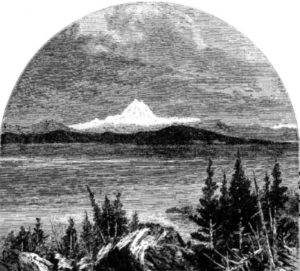

Native Americans who lived in the foothills certainly climbed the mountain in early times. In 1866, Edmund Thomas Coleman (1824-1892), from England, was the first known Anglo to attempt to climb Mount Baker. On his first attempt he was turned back by local Native Americans, but later that year he made a second attempt from a different route. He aborted seven hundred feet from the summit because of an “overhanging cornice of ice” and threatening weather.
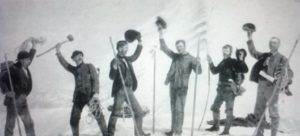

Two years later, in 1868, Coleman with others successfully reached the summit. On August 16, 1868. “With the traditional spiked boots, knapsack, provisions, rope, pole, etc., they commenced the real ascent and at 4 p.m. stood on the summit. The last 500 feet were accomplished by the use of a pick to make foot holes in the ice. On top of Grant Peak they raised the Stars and Stripes.
Reaching above the clouds




Planning for the Mount Baker Race
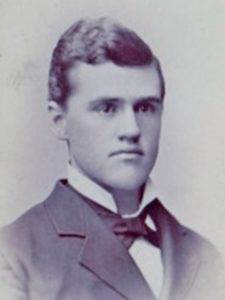

In 1911, Arthur J. Craven (1857-1925), a brilliant lawyer, was president of the newly founded Mount Baker Club with about thirty members. He approached the Bellingham Chamber of Commerce with the idea for a race to the top of Mount Baker.
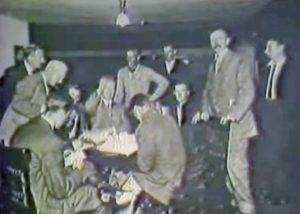

The idea was pursued and the Chamber of Commerce of Bellingham, Washington, announced that they were going to hold a race on August 6, 1911, to the top of the mountain and back with a prize of $150 to winner. The main motivation for the race was to draw attention to the area and also find the best route to the top of Mount Baker. Over the years local debates had taken place how to best promote that area. Should they push for a national park like nearby Mount Rainier? They hoped that this event would turn the eyes of the nation to their majestic mountain region and bring tourists.
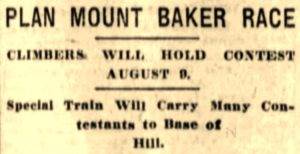

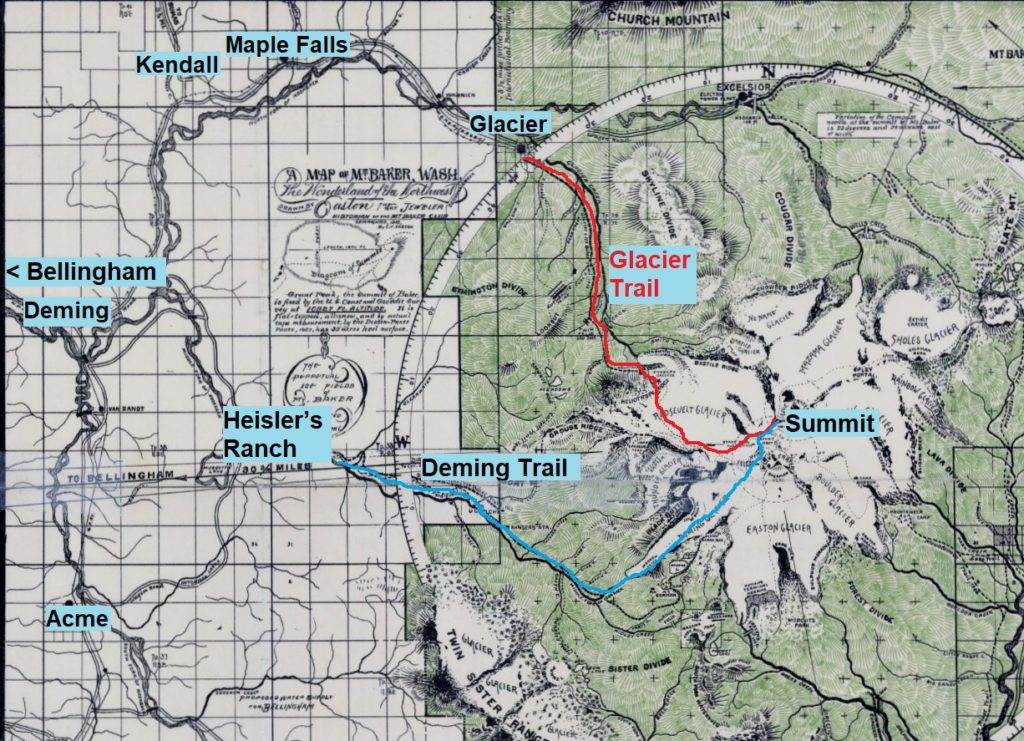

The race would start from the city of Bellingham, a city of about 24,000 people, and go to Mount Baker summit and back. Participants had two choices for their route to the top.
- Route 1 involved taking a speedy special train, on a cleared track, for 44 miles to the town of Glacier where they would disembark and then run the Glacier Trail for about 28 miles to the summit and back. On return, they would ride the train back to Bellingham to the finish. If you weren’t the first to the train you would have to wait for its return or take an automobile. Total miles for this option were about 116 miles.
- Route 2 was to go by unreliable automobiles of the time on rough roads for 26 miles to Heisler’s Ranch and then run the Deming Trail for 32 miles to the summit and back. The Deming Trail was longer than the Glacier Trail but involved a shorter snow climb. On return, they would ride back to the finish in their automobile for a total trip of about 84 miles.


Organizers declared that this would be the greatest mountain climbing contest ever staged in America. With a week to go, seventeen local men had signed up for the race. Trail work was performed to cut away some of the brush and do a little grading where it was needed. The less-used Glacier Trail was marked on with blazes on the trees and ground markings.


The 14 starters were: Joe Galbraith, Clayton C. Wright, Richard Hawkins, John Turner Riddle, C. Palmer, Judge Funk, Norman Randle, Joseph N. Frankoviz, Harvey E. Haggard, John K. Magnuson, Frank E. Botteger, Stanley Gilday, Dick Hess, and Tom Kelly.
Pre-race
On August 9, 1911, around 9 p.m., the starters arrived at the Chamber of Commerce office, received their bib numbers, and were photographed. The motor cars to carry some of the runners lined up and the special train “hissed and hummed with a full head of steam.”
Even at that late hour, a huge crowd came out to watch. “Thousands of men, women and children, in motor cars, streetcars, at the windows and on the roofs of buildings, and stretched for a mile or more along the way, waited and watched for the start.”
The Start in Bellingham
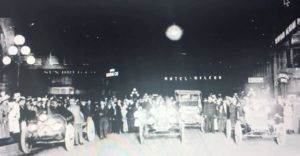

A little after 10 p.m., the race started from the curb in front of the Bellingham Chamber of Commerce on Dock street. Six runners went by cars to Deming and eight by train to Glacier. “The men were started by the discharge of a pistol and the dash began for the automobiles and the special train waiting two blocks away. Like a regiment on charge, the contestants clambered helter-skelter into the already moving automobile machines, while the balance went for the special train. The race was on.”
The motor cars quickly gained a speed to 35 mph. “The speed at the Elk Street turn was terrific, for much depended upon the car first to leave the asphalted streets.” Joe Galbraith’s Ford, named Betsy, was in first. “The train with whistle screeching a warning and bell a-clanging, chugged its way to Glacier. Fainter and fainter and faster and faster sound the explosions of its exhaust. By the time the cheers of thousands of spectators had died away, cars and train had disappeared.”


Up until midnight, huge crowds paraded the streets or attempted to cram the newspaper office, anxious to glean any information about the progress of the race. The people “ran about the streets like lunatics, shouting, cheering” trying to get news. “Suitable long-distance telephone connections had already been specially provided for at points along the route. Reports of the progress were sent in and announced at once.”
The train races to Glacier Trail
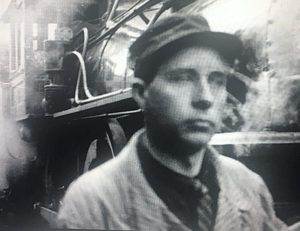

The train was driven by John S. Golithon (1872-1940). He was later asked how fast it was traveling. “I don’t know, she was going like hell.” At 10:31 it passed through Kendall and whizzed by Maple Falls at 10:48. “Her headlight was visible at Glacier. Two minutes later she had come to a stop, still hissing and throbbing at the depot, and the contestants hit for the hills.”
Haggard was the first to reach the summit
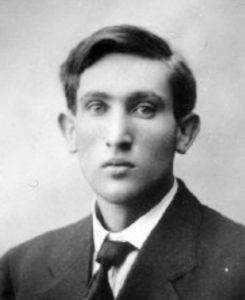

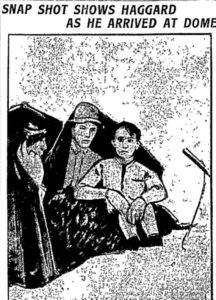

After about an hour on the train, he arrived at the Glacier trailhead. “He set out for the top of the mountain at a trot, reaching the summit in first place at 5:18 a.m.” When he arrived, the air was full of snow with an estimated 70 mph wind. “Haggard was garbed only in his underclothing, the only clothing worn by him in his spectacular dash to the peak. Haggard was wrapped in a heavy blanket and permitted to rest for the four minutes wait imposed by the judges on all candidates.”
Automobiles race to Deming Trail


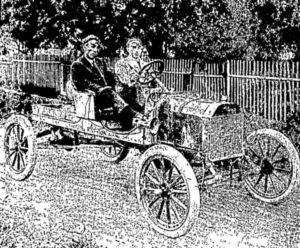

After the start, Galbraith quickly boarded a stripped down Model T Ford named “Betsy” driven by Hugh Diehl (1880-1952) who owned the local Ford dealership. They went “at a terrifying speed, up to fifty miles per hours.” Galbraith huddled down low in the seat of the motor car and wrapped hold-on straps around his wrists. Diehl “careened twenty-seven miles up a rocky, rutted road, and often plowing through deep mud.”


One car driving Funk and Palmer broke down and they were out of the race. The high speed and rough roads had proved too much for the automobile’s springs. Funk and Palmer returned to Bellingham during the night.
The run to the summit and back using the Deming Trail
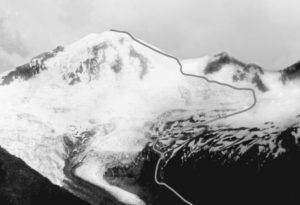

Galbraith was the first to reach the Deming trailhead at 10:54 p.m., with the next car only a minute behind. Leaving the motor car at this point, Galbraith started on a trot up the mountain. For light, Galbraith and the others carried a “bug,” which was a Crisco can with a candle poked through, used by miners.
Riddle was about a half mile behind. After two miles, Riddle’s candle burned out. “I went to look for the other candle that I had stuck in the top of my sock but it was gone. I stumbled on in the dark, losing the trail once or twice and fell into a creek.”
Galbraith stopped at Mazama Lake where he was greeted by his three brothers and other friends who had set up an aid station camp. “Refreshments and all courtesies possible were extended to all contestants. There he rested, changed shoes and clothes, losing 31 minutes.” From there, his brother Hugh R. Galbraith ( 1892-1973), a farmer and logger from Acme, paced him upward, which was allowed. He was probably the first American pacer during a mountain ultra. Riddle eventually also arrived at the camp. John Kenyon Magnuson (1876-1949), a logger, caught up to Riddle and passed.
Galbraith arrived at the snowline around dawn. “The snow was hard and in excellent condition for traveling.” After 16 miles, he arrived at the summit at 5:37 a.m., nineteen minutes after Haggard who had used the Glacier Trail. The next runner to arrive was Magnuson, at 5:46 a.m. Only five of the 14 starters were able to reach the summit.
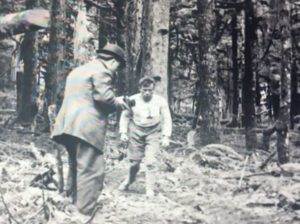

After registering at the summit, Galbraith started his return trip. He passed Riddle coming up at from the crater toward the summit. Galbraith continued down the mountainside, “over the snow that was then beginning to melt under the rays of the rising sun, through the fields of flowers and heather at the snowline, on down through the forests.” He spent another fifteen minutes at the Galbraith camp and George Freeman Hulbert (1859-1922), a carpenter, took over the pacing duties back down to the trailhead.
As Riddle pushed toward the summit, about an hour behind, he was met by two judges who refused to let him go on because of a sudden severe storm. He said, “They handicapped me and I accepted their decision and turned back.”
Haggard’s unfortunate trip back to Bellingham
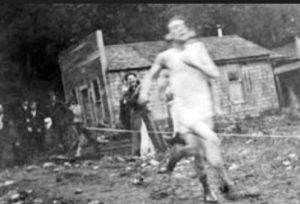

Meanwhile, Haggard, on the Glacier trail, with a shorter trip down, was the first to reach the trailhead at 9:01 a.m. with a 28-mile round-trip run of 10:59.
Haggard boarded the waiting train and started back. He took off his sweaty clothes and was given a rub down by another runner, Tom Kelly, who had only gone part way up the mountain and then returned. The train sped back toward Bellingham.
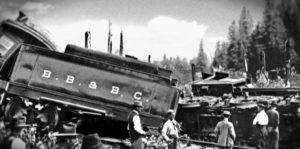

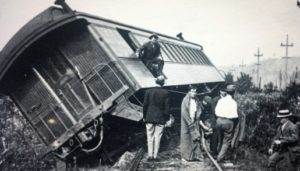

Haggard, lying naked in a bunk, hit the ceiling of the coach, was slammed into a corner and bounced back among the seats. He climbed out and said, “I am all right, but I am afraid I’ve lost the race.” He dressed, and was delayed for about 40 minutes. He first hitched a ride on a horse buggy to Maple Falls and then rode a fast horse, “Buster” toward Kendall. Haggard said they were moving so fast that “the scenery looked like a moving picture film running amuck.”
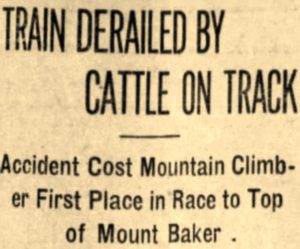

Galbraith’s finish
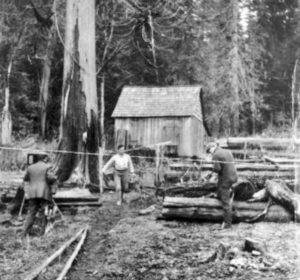



Galbraith had much better luck than Haggard on his return trip from the Demming Trail. He rejoined his driver Diehl at 9:40 a.m. His 32-mile round-trip run on the Deming Trail was accomplished in 10:46.
The Ford was cranked up and Galbraith put on a heavy overcoat and goggles for the trip back. He was so tired that he had to strap himself into the car so he wouldn’t fall out.
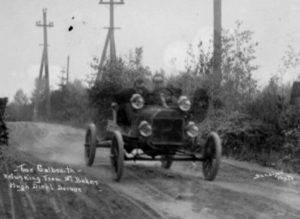

On the way back, they approached a woman standing by the road with a horse. The speeding Ford frightened the woman who fell on the road. “Diehl quickly turned the machine into the ditch, missing the woman by a few inches, careening away over the very point of upsetting then righted and again took up the wild race toward Bellingham.” They ran into a ditch a second time while passing a broken-down auto.
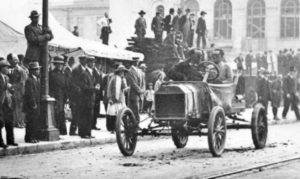

Word was received that at Bellingham that Galbraith was on his way back. Morning business was practically suspended as a great crowd of enthusiastic people gathered in front of the Chamber of Commerce on Dock Street awaiting the returning mountain runners. They were totally surprised how soon they were returning. “The crowd would have been tripled had it been dreamed that the racers would have made the trip to the summit and return in such a remarkably short time. The crowd that lined the streets were craning forward, waiting for the approach of the machine.”
Soon Betsy dashed around the corner of Magnolla and Dock “and whirled up to the curbstone in front of the Chamber of Commerce. Galbraith leaped out of the machine, hopped up the stairway and registered, writing his name in a firm hand. Cheer upon cheer arose from the crowd when he returned on the street.” He finished first at 10:28 a.m., with a total time of 12:18. Covered with mud and exhausted, he accepted the cheers by the adoring crowd and was greeted by his family.
Haggard finishes second
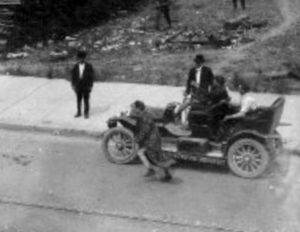

Haggard’s approach to the finish of the race was even more spectacular because word spread about his hard luck. The crowd went wild. Haggard arrived in second place at 11 a.m., for a total time of 13:10, 32 minutes after Galbraith. He was quickly taken to a place where he could bathe and rest.
Galbraith won $100 cash, a buffalo robe, and the silver Herald trophy donated by the Bellingham Herald.
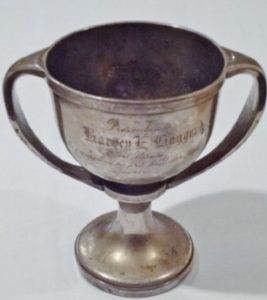

But Haggard was the hero of the spectators and proved that the Glacier Trail was actually the fastest route to the top of Mount Baker. A hat was passed raising $50 for him and an additional $130 was thrown in by local communities. The town of Glacier elected him “King of Glacier.”
The other runners
Turner Riddle, who the judges didn’t let go up to the summit, finished in third from the Deming Trail, arriving at 11:19 a.m. and Magnuson, who also used the Deming trail, finished fourth at 11:30 a.m. After Riddle finished, he rode his bicycle back to his home in Deming, adding on another one hour forty-five minutes to this travels for the day.
What happened to all the runners who used the Glacier trail that couldn’t ride the train back? They were all delayed at Glacier and were not able to return to Bellingham until the evening. That evening the train wreck was cleared from the tracks. “The whole damage to the engine and car consisted of some broken pipes.”
The race aftermath
Galbraith was honored by his hometown of Acme at a Chamber of Commerce banquet and awarded a nice trophy. He commented that he had to go some to win the race and planned to enter it again the next year. The Acme newspaper suggested that the next race be totally on foot for more than 100 miles.
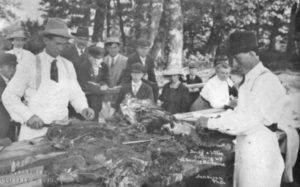

At Glacier, the dead bull was barbecued for a big banquet in Haggard’s honor. The owner of the dead bull presented a bill of $40 to the Bellingham Bay & British Columbia railway. It was paid.
The 1911 race was viewed as a success and plans started right away to make the race an annual event. “It is the object of the Mt. Baker Club to continue these marathons as long as they may be beneficial in stirring up active interest and co-operation in the building of roads and better trails which will aid in opening up the fascinating features of this wonderland”
The 1912 Mount Baker Marathon
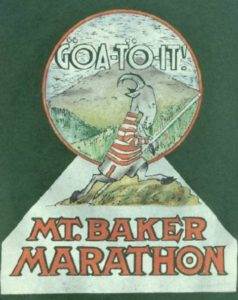

Race day was set to July 24th with a big festival associated with it. The winner’s prize was increased to $500. Unfortunately on July 8th, Joe Galbraith, the defending champion, was in an automobile accident and suffered a broken shoulder, a severe gash in his leg, and many bruises. Galbraith had been training on the Deming Trail for the past several weeks, looking forward to the race, but his injuries forced him out. Other runners were also actively training on the trails.
The Concrete Trail


In June, serious work started constructing a new Concrete trail. But in early July, Concrete pulled out of race, claiming the railroad could not deliver on a promise for a fast train. Concrete announced that it would hold its own race on the same day which would originate from their town. Engberg was disappointed that they withdrew, but said he was supportive of their independent race.
1912 race preparations
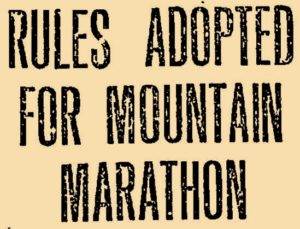

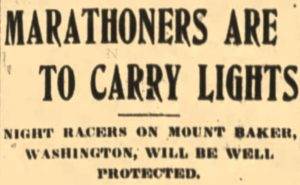

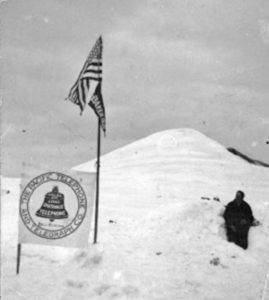

Fourteen miles of telephone wires were strung up both trails to checkpoints two miles apart, and nearly to the summit. Runners training on the mountain helped to put up the line. Trail work was conducted on the Deming Trail reducing its length in one section to make it less difficult. Runners also helped build a cabin near the snowline on the Glacier Trail.


Weather troubles
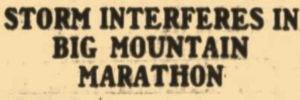

The judges turned back because of a raging blizzard. “The judges made several attempts to climb the glaciers from the Deming trail and each time were caught in blinding snowstorms which forced them to retrace their steps. One of the judges, says fully ten feet of snow has fallen this morning with a fifty-mile gale blowing. The judges feared for the lives of the sixteen contestants, hurried to the foot of the peak and advised headquarters by telephone that the contest must be postponed.”
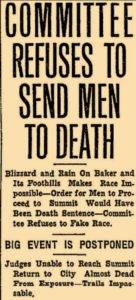

The race committee decided, very reluctantly, only three hours before the start, to postpone the race for at least a week. Race officials said, “We could have pulled off a fake race by letting the runners start out from the city and going just a short ways over the trail, but what would people have said this morning?”
The Concrete race
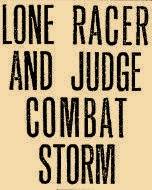

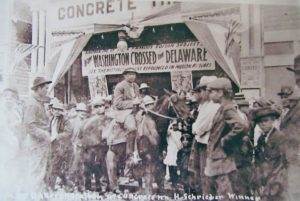

“For hours, the two men battled with the blizzard, finally reaching the yawning crater, about three quarters of the way up the mountain. There, the wind was blowing a gale, the cold blasts laden with thick snow. They were forced to turn back, returning safely after nearly 11 hours and 40 minutes.” His running time on the trail was ten hours. Schreiber was awarded $200 for his effort.
The 1912 postponed race start
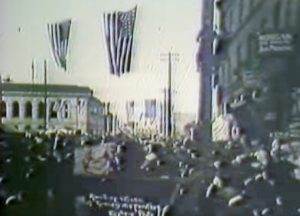

The race did go forward on the planned night. A large number of visitors came from all parts of the Pacific Northwest came to watch. “When the hour for the departure of the racers arrived, they gathered along the streets over which the cars were to pass and waited tensely for the starter’s pistol to explode.”
The Glacier Trail runners
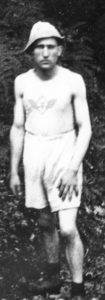

The starter’s gun was fired at 11 p.m. Harvey Haggard, Joe Frankoviz, Victor Galbraith (cousin of Joe), and Paul Westerland, took the speedy train headed for the Glacier Trail with two others. Westerlund was a serious runner and had won the Mount Wilson marathon that year. He had spent two months training on Mount Baker. When reaching the trail, the rain began to fall and they climbed into snow and dense fog. The last 400 feet to the summit seemed like it took the most time. Westerlund was first to reach the summit.
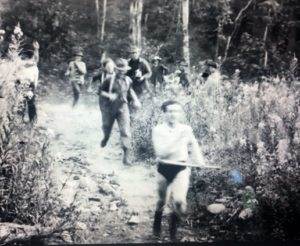

When the three arrived back at the train, Haggard and Francoviz were in a virtual tie. “Both men landed together and jammed each other in the effort wriggle into the doorway. One minute later Galbraith arrived.” It had been anticipated that multiple runners would likely take the same train back to Bellingham, so the agreement was that once reaching Bellingham, they would sprint by foot to the finish at the Chamber of Commerce in the order they had reached the train.
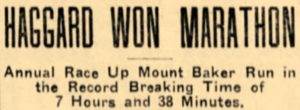

Westerlund, had become exhausted coming down the mountain. When he failed to show up at the train depot, a relief party was sent in search of him. But he eventually arrived at the trailhead and took an automobile back to Bellingham, finishing last.


A tragedy occurred when Harry Lewis was racing his automobile on the way to pick up Westerlund, to take him to the finish. In Bellingham, Lewis came around a corner at about 20 mph, skidded and climbed upon the sidewalks, striking 75-year-old A. A. Rogers to the ground. Later in 1913 Rogers, a Civil War veteran, brought forward a law suit of $11,000 against Lewis and the sponsoring automobile company. Rogers had been confined to bed for 23 weeks with broken bones. He was eventually awarded $2,000 but agreed to an undisclosed settlement.
The Deming Trail runners
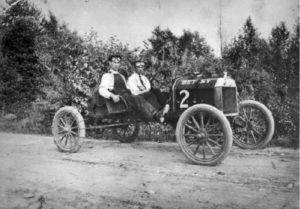

What happened to the runners who raced in automobiles and then went up the Deming Trail? Three automobiles raced out of Bellingham. John Magnuson rode in Baby 40, Hugh Galbraith (Joe’s brother) in Betsy I, and Turner Riddle rode in Betsy II.
“Frightened children clutched the skirts of their mothers as the lights of the cars flared in their faces. Strong voiced farmer lads cheered, and buxom country maids shrieked encouragement. Fires gleamed along the road, and the surcharged atmosphere of excitement was tense as the cars passed.”
Magnuson’s car, smashed its frame about one mile from the Deming trailhead but he was able to continue slowly. The Betsy II had developed some engine trouble, but Hugh Galbraith let Riddle ride the rest of the way with him in Betsy I.
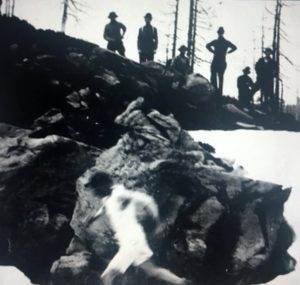

Because both of them had broken-down cars, replacements had been sent while they were on the trail. Magnuson’s replacement car developed engine trouble about six miles from the finish and he was passed by Riddle. Magnuson was later picked up by Hugh Diehl in a Ford and brought to the city. Riddle finished in 9:58, in 4th place, just seven minutes after the leaders and Magnuson finished in 10:14.
The Concrete runner


1913 race changes
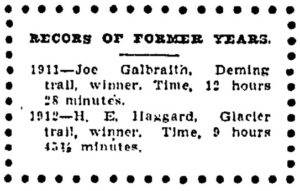

Race organizers understood that the Glacier route with the train ride was the faster of the two routes. They decided to change up the race format. If you went up the Deming trail you came down the Glacier trail and vice versa. So, they took the train on one leg and cars on the other.
The race
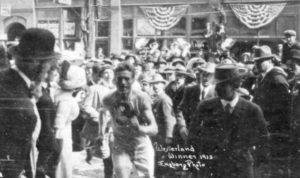

Thousands came to Bellingham and the mayor proclaimed a business holiday. Many other activities took place during the race. About 20,000 people watched as Paul Westerlund, of California, come into the city and finish first at 2:39 p.m. “Apart from the grime of heated sweat and blowing snow and sleet, Westerlund showed little signs of the terrific grueling he had passed through in the storms of the mountain slopes.” Westerlund had gone up the Deming Trail and down the Glacier Trail, going by car and returning by train with a total time of 9:39.
Race controversy
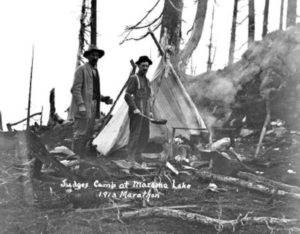

The race, led by race director Dan North, a city attorney, was poorly managed that year. At some point, the race committee had decided that because of recent storms, the runners would not go clear to the summit and would instead go as far as the saddle and return, which Westerlund did. But the runners on the Glacier Trail claimed they never got the word. The race staff insisted that they informed the runners of the change during the previous night’s race briefing and that the runners were also reminded by observers along the trail.
However, because of the bad weather conditions, some of the judges had left their posts and headed down from the mountain. “Through some misunderstanding and because there were no judges to guide them, the men who ascended on the Glacier Trail in reality went clear to the summit.”
Thus, Westerlund won because he only went to the saddle and back, avoiding the additional 1,000-foot climb to the summit. At the finish, several runners who went up the Glacier Trail protested the results. Eventually the first place prize was split with Magnussen who was the first to return from the summit.
Victor Galbraith lost
All of the controversy became secondary. As the city was celebrating the finish, Victor Galbraith was missing on the mountain. He had reached the summit using the Glacier Trail, but then he went missing as he was descending during the afternoon. His cousin, Joe Galbraith and others organized a search party early in the afternoon and started out in a sleety blizzard to try to find him.
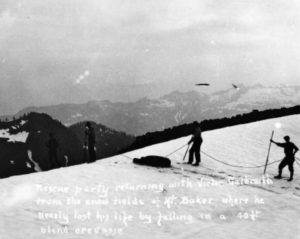

Victor had fallen into a 40-foot crevasse on his way down from the summit on the Deming Trail. He could not pull himself out and was dressed in scant running clothes in the cold weather. He shivered as he waited, hoping for rescue.
Albert Millard Burnside (1878-1943), who had been following Galbraith’s footprints down the mountain noticed they stopped but went on. Two hours later he was able to direct the search party to the point where the footprints disappeared. Joe Galbraith and a brother discovered the injured Victor in the crevasse where he had slipped while trying to cross about five hours earlier. They heard Victor’s shouts for help coming up from a small hole in the snow. They dropped a rope noose around one of his feet and hauled him to the surface. He was suffering from severe shock and exposure. They immediately took him down to the Mazama Camp, the ranger’s camp, on an improvised stretcher and blankets.
Victor recovered and his only injuries were from bruises. It was decided to leave him at the camp until he was strong enough to be carried out on a stretcher. Victor later talked about his ordeal. “His first thought when he broke through the crust was to wonder if he struck a wedge-bottomed crevasse. His next thought was to mentally remark that he guessed he was out of the race for this year. He informed the rescuers that he had not worried while in the crevasse, as he was sure that his relatives who were waiting at the snowline would come for him.”
The 1913 Mount Baker Glacier match
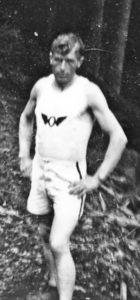

Because of the controversial results of the 1913 race, Westerlund (who was first proclaimed the winner) wanted to prove that he was his win was legitimate. A head-to-head match between Westerlund and Millard Burnside (who had been the first to the summit), was arranged by Will P. Barnes (1872-1956) of the Bellingham Herald to be held from the town of Glacier on August 31, 1913. Many bets were made and Burnside, the local man, was favored. The runners would run up and down the Glacier Trail.
About 1,300 people came to Glacier to watch the start. A special train with six coaches and several box cars brought many of them in. About 30 automobile parties also came to the remote town. It was the largest crowd of visitors the town had ever seen. Light rain spoiled some of the day’s enjoyment. Clouds enshrouded the hills above and the morning was unusually cold.
The match race started at 9:03 a.m. at the crack of a starter’s pistol. The runners dressed in only light track suits and running shoes, started at an easy lope as spectators lining the course cheered. The two ran together for the first three miles as the rain continued to pour. They were only 50 feet apart at the ten mile mark at 1:59. “At the snow line, Westerlund stopped to change into heavier snow clothes but Burnside’s clothes were not there, so he merely changed his shoes and continued up the mountain in his light gymnasium suit.”
Burnside arrived first at the top by eight minutes in a blinding snowstorm and fog, with a very impressive time of 3:54. “All the way down the mountain side, the two runners were close together and everything looked favorable for Burnside.” But at the telephone station three miles above Glacier, Burnside, with a bad ankle finally could go no further. “Westerlund was sprinting down the trail at a lively clip, running strong, outdistancing everybody who tried to follow him on the trail.”
![]()
![]()
The Mount Baker Marathon is discontinued
The race was discontinued the following year, not because of safety concerns, but because of all the work putting it on and the difficulty finding those who were willing to sponsor the race. The Mount Baker club also had achieved one of its goals, appropriation for a road to the mountain, so their motivation to sponsor decreased.
In 1915, there was serious consideration and enthusiasm about putting the race on again around July 4th because thousands of tourists would being coming to the Pacific Northwest on their way to the Panama-Pacific Exposition held in San Francisco, California, to celebrate the completion of the Panama Canal. Plans were put in place to have the runners all ascend the same trail and descend the other. But the Mount Baker Club leadership changed and the race wasn’t held. The club soon went dormant for many years.
What happened to them?
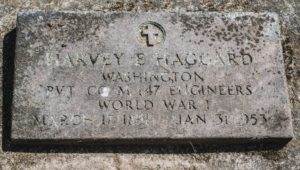

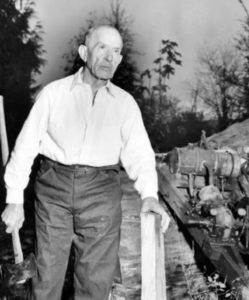

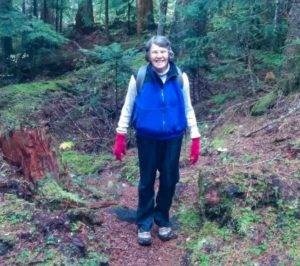

Joe Galbraith remained a farmer and continued to hike and mountain climb into this 70s. He kept his 1911 Herald trophy in an upper cabinet in his kitchen. He died in 1959 at the age of 75.
In 2015, Joe Galbraith’s 79-year-old daughter, Gail Galbraith Everett, and grand-daughter Natalie were guided up Mount Baker by Dan Probst in the path of her late father. She had often dreamed of hiking along the route of her father’s triumphal run.
Ski to Sea
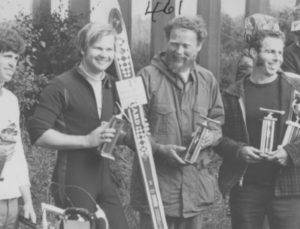

In 1973, a new race began on Mt. Baker: the Ski to Sea Relay. Ski to Sea racers began at the top of the Mount Baker Ski Area. One at a time, relay team members skied downhill and cross country, rode mountain and road bikes, and the canoed and kayaked to the finish line at the Puget Sound. In all, the race covered 82.5 miles, and thousands of people would participate each year. The very early adventure race has continued to the present day.
The Mountain Runners
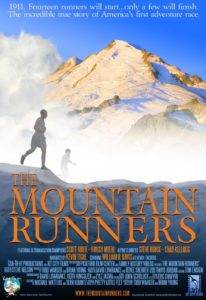

Mount Baker Ultra
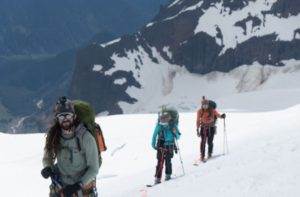

The 2020 race will be held on May 21, 2020. The course runs on forest service roads, seven miles of snow trail, and on about three miles of a glacier section where runners use required harnesses and are clipped to fixed ropes. You don’t need to be an experienced mountaineer, but basic training is encouraged to learn how to self-arrest and know how to use equipment. To be part of this amazing reenactment of history, register at ultrasignup with a very reasonable entrant’s fee. See the Mount Baker Ultra Trailer.
Sources
- Dozens of articles from The Bellingham Herald (1910-1915) is the main source
- The Baltimore Sun (Maryland), Jan 13, 1865
- Daily Union Vedette (Camp Douglas, Utah), May 22, 1865
- The Leeds Mercury (Leeds, England), Oct 27, 1868
- Public Ledger (Memphis, Tennessee), Nov 14, 1868
- Harper’s New Monthly Magazine, November 1869
- Weekly Oregon Statesman (Salem, Oregon), Nov 5, 1869
- Semi-Weekly Spokesman-Review (Spokane, Washington), Aug 6, 10, 14 1911, Jul 25, Aug 1, 1912, Jan 13, 1925
- The Tacoma Times, Aug 10, 1911, Jul 25, 1912
- He Province (Vancouver, Canada), Aug 2, 8, 10 1911, Jul 24, 1912
- The Victoria Daily Times (Victoria, Canada), Aug 8, 1911, Jul 26, 27 1912
- The Oregon Daily Journal (Portland, Oregon), Aug 10, 1911
- Times Colonist (Victoria, Canada), Oct 10, 1911
- Bellingham Daily Herald (Washington), Aug 6, 1911
- Hiking in my Dad’s Hundred-Year-Old Bootprints
- Emily Lieb, “Joe Galbraith wins the first Mount Baker Marathon on August 11, 1911” (wrong date)
- The Mountain Runners
- Spokane Chronicle (Washington), Jul 23, 1912
- Laredo Weekly Times (Texas), Jul 21, 1912
- The Independent-Record (Helena, Montana), Jul 23, 1912
- The Los Angeles Times (California), Jul 26, Aug 2, 1912
- The Allentown Leader (Pennsylvania), Aug 2, 1912
- Calgary Herald (Canada), Jul 12, 1912
- Bellingham Herald, “Ski to Sea draws from long, colorful history”
- “The Greatest Race in 1911 – Mount Baker Marathon”
- Mount Baker Ultra

